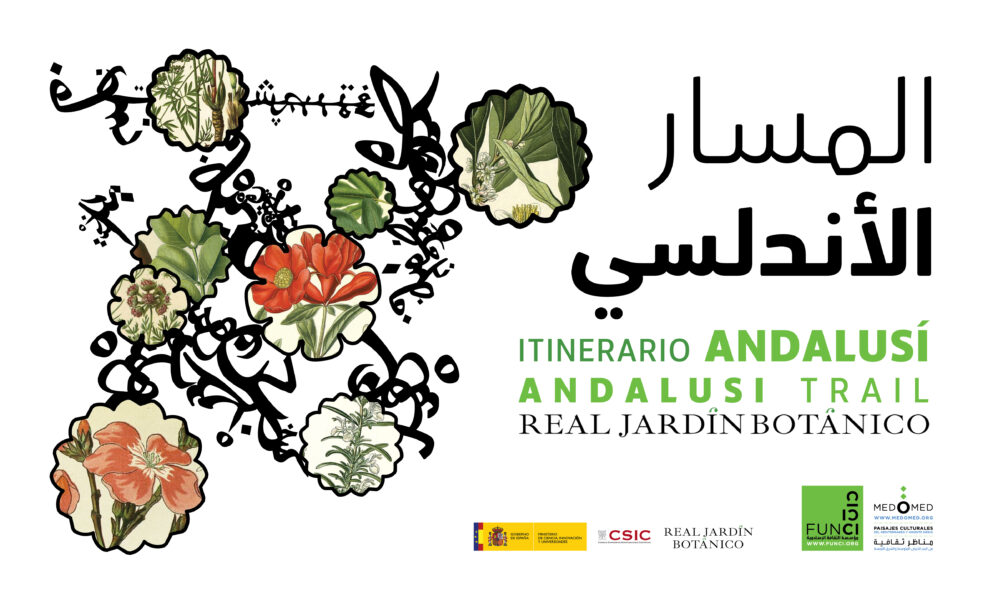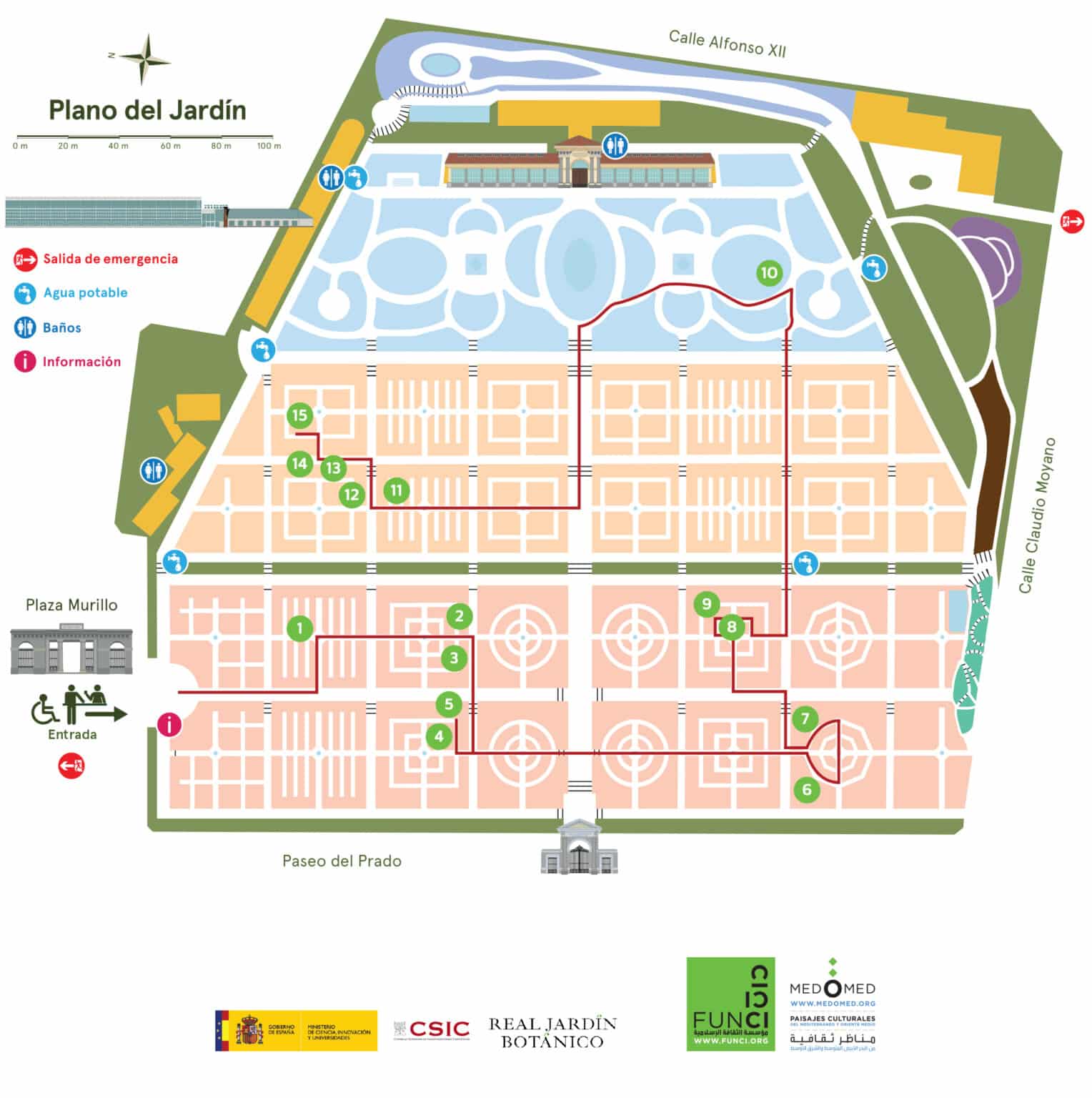Coinciding with World Environment Day, this route was presented, which brings together 15 plants linked to food, medicine, cosmetics and horticulture in Al-Andalus. During the month of June, guided tours have been organised along the route, two of them free of charge in Spanish Sign Language for people with hearing disabilities.
The period of Al-Andalus (711 to 1492) left its mark on the daily life of the Iberian Peninsula, as well as on its architecture, agriculture, philosophy of life, traditions, language and natural landscapes. During this period, gardens spread over a large part of the Iberian Peninsula and covered a great morphological and conceptual diversity; they were not limited to the well-known model of the cruise that reflected the representation of the spiritual orchard.
The great appreciation that the Andalusians and the Muslims of the Middle Ages had for nature led to a poetic movement known as rawdiyat (from ryad, garden in Arabic). The gardens multiplied and, today, some of them are still admired and visited for their beauty and uniqueness. The Alhambra in Granada, the Patio del Yeso in the Real Alcázar in Seville, and the garden of the Patio de la Contratación, also in Seville, are examples of this interest in botany.
Coinciding with World Environment Day, the Royal Botanical Garden (RJB) of the Spanish National Research Council (CSIC), dependent on the Ministry of Science, Innovation and Universities (MCIU), and in collaboration with the Islamic Culture Foundation (FUNCI), presented on 5 June 2024 at the RJB-CSIC the ‘Andalusi Trail’, a botanical tour that from now on can be taken by all visitors to the RJB with the aim of getting closer to the natural heritage of al-Andalus.
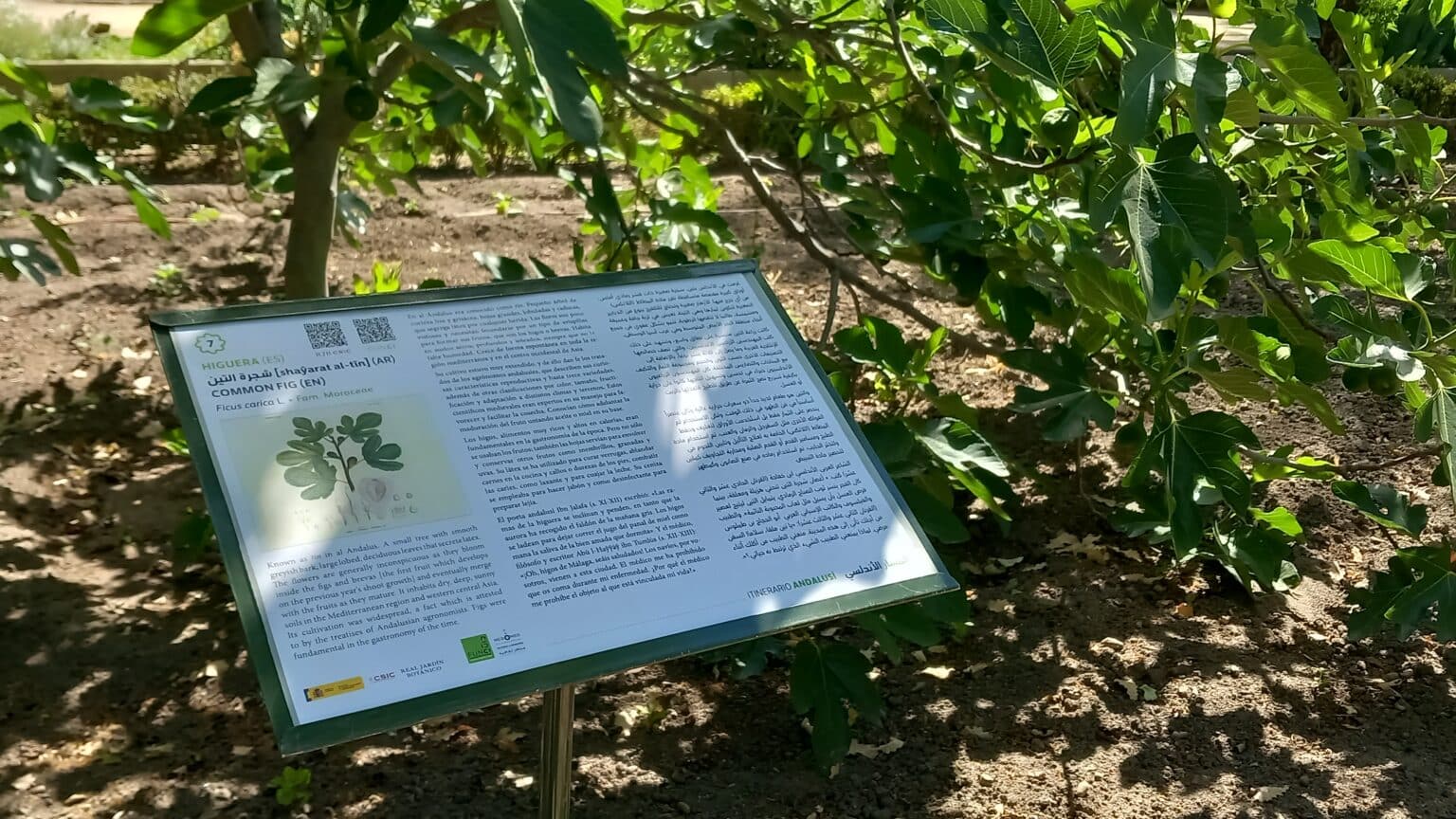
Fifteen plants have been selected for this route, which not only illustrate the vegetation, but also allow us to discover the agricultural and landscape culture of an important period in the history of the Iberian Peninsula. Thus, there are species that are characteristic of Andalusian culture, but also reflect our everyday landscape. Many of these plants have been linked to food, medicine, pharmacopoeia or even ornamentation.
A trail symbolising the principles of the Royal Botanic Garden
At the presentation, the director of the Royal Botanical Garden-CSIC, María-Paz Martín, pointed out that this route brings together the founding principles of the RJB such as ‘research, by studying the plants of the time of Al-Andalus; conservation, working for the preservation of this plant legacy; and education and dissemination, by setting up this route so that the public, in general, and our visitors, in particular, can get to know this natural heritage better’.
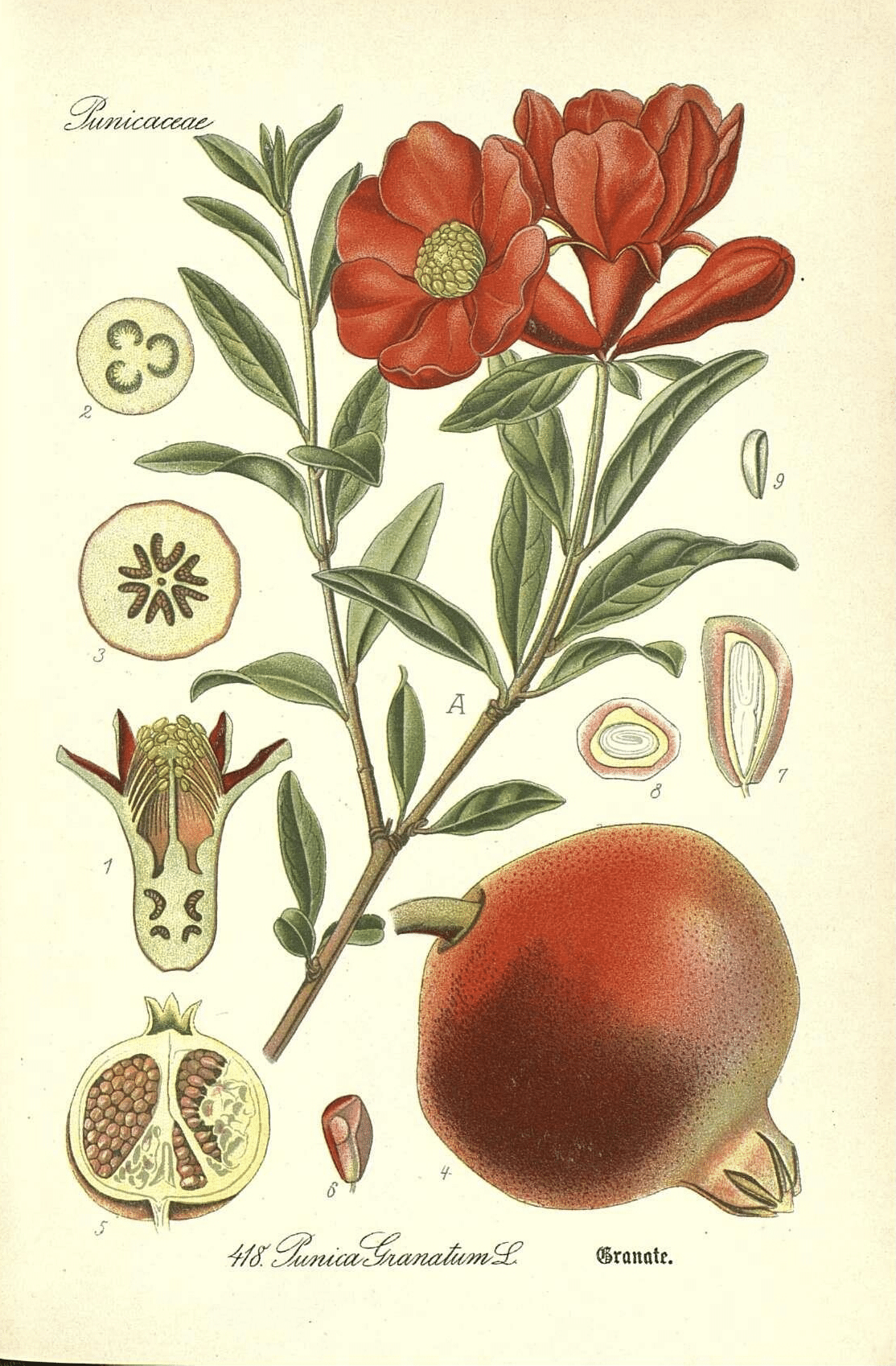
The director of the RJB-CSIC added that this project ‘is also an example of the collaboration that the Royal Botanical Garden wishes to establish with public and private institutions, in this case with the Foundation of Islamic Culture, to jointly research, conserve and disseminate botanical science’.
Along the same lines, the general secretary of the Foundation of Islamic Culture, Encarna Gutiérrez, positively valued the fact that ‘the Royal Botanical Garden is hosting this route, which was created with the desire to teach and disseminate the natural heritage of Al-Andalus which, although it is present in our everyday landscape, is still largely unknown’.
The representative of FUNCI recalled that since 2009 the RJB-CSIC is a member of the Network of Botanical Gardens of the Mediterranean and Middle East (Med-O-Med) and added that ‘the importance of this proposal to know the contribution made by the Andalusian botanists, whose legacy had an enormous impact not only on the different Mediterranean societies, but also in the transformation of their landscapes until the present day. These plants represent a channel for dialogue and coexistence that can be explored thanks to this itinerary’.

A journey to discover Andalusi culture
This itinerary is just a small sample of the entire natural legacy that dates back to the High Middle Ages and whose origins stretch from the Far East to the Maghreb. ‘This Andalusian Itinerary allows us to discover the agricultural and landscape culture of a remote era, but which is still present today, said Felipe Castilla, biologist, technician in the Scientific Culture Unit of the RJB-CSIC and coordinator of the itinerary.
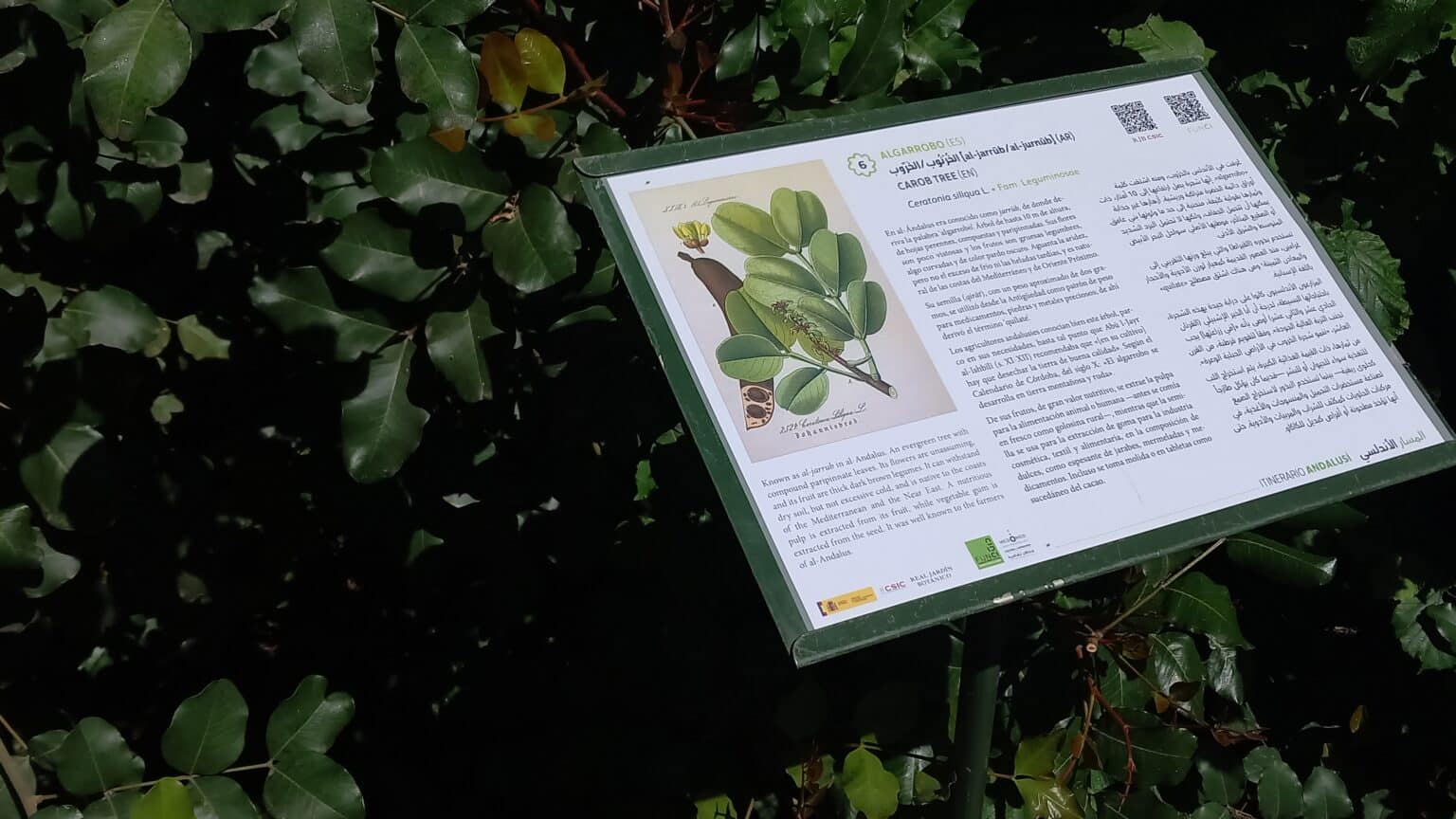
The fifteen plants that illustrate the visit reflect this legacy in different fields: cooking (fennel and laurel), agriculture and horticulture (olive, fig and pomegranate), medicine (rosemary), cosmetics (lavender) and everyday and ornamental landscapes (oleander, cypress and jasmine), among other selected species.
The itinerary can be self-guided thanks to the map-brochure available on the website of the Royal Botanical Garden. In addition, during the month of June, guided tours are offered on Saturdays 8 and 22, and on Sundays 16 and 30 through the activity Plants of ‘Al-Andalus’.
Thanks to the collaboration of the Spanish Foundation for Science and Technology of the Ministry of Science, Innovation and Universities (FECYT-MCIU), on Saturdays 8 and 22, at 12:30 pm, the visits will be conducted with a Spanish Sign Language interpreter. The activity is free of charge for people with some kind of hearing impairment by booking their place here.
The presentation of the ‘Andalusian Trail’ was also attended by the botanist, professor at the University of Alicante (UA), director of the Torretes Biological Station (UA Botanical Garden) and FUNCI collaborator, Segundo Ríos Ruiz, who explained that ‘Andalusian gardening left a legacy present in the use of some plants specific to their culture, such as the myrtle, and many others common to the Mediterranean tradition. All of this, together with certain practices and forms of planting and maintenance of the garden, constitutes a legacy that must be preserved and materialised in new gardens as a cultural testimony and for the enjoyment of new generations’.

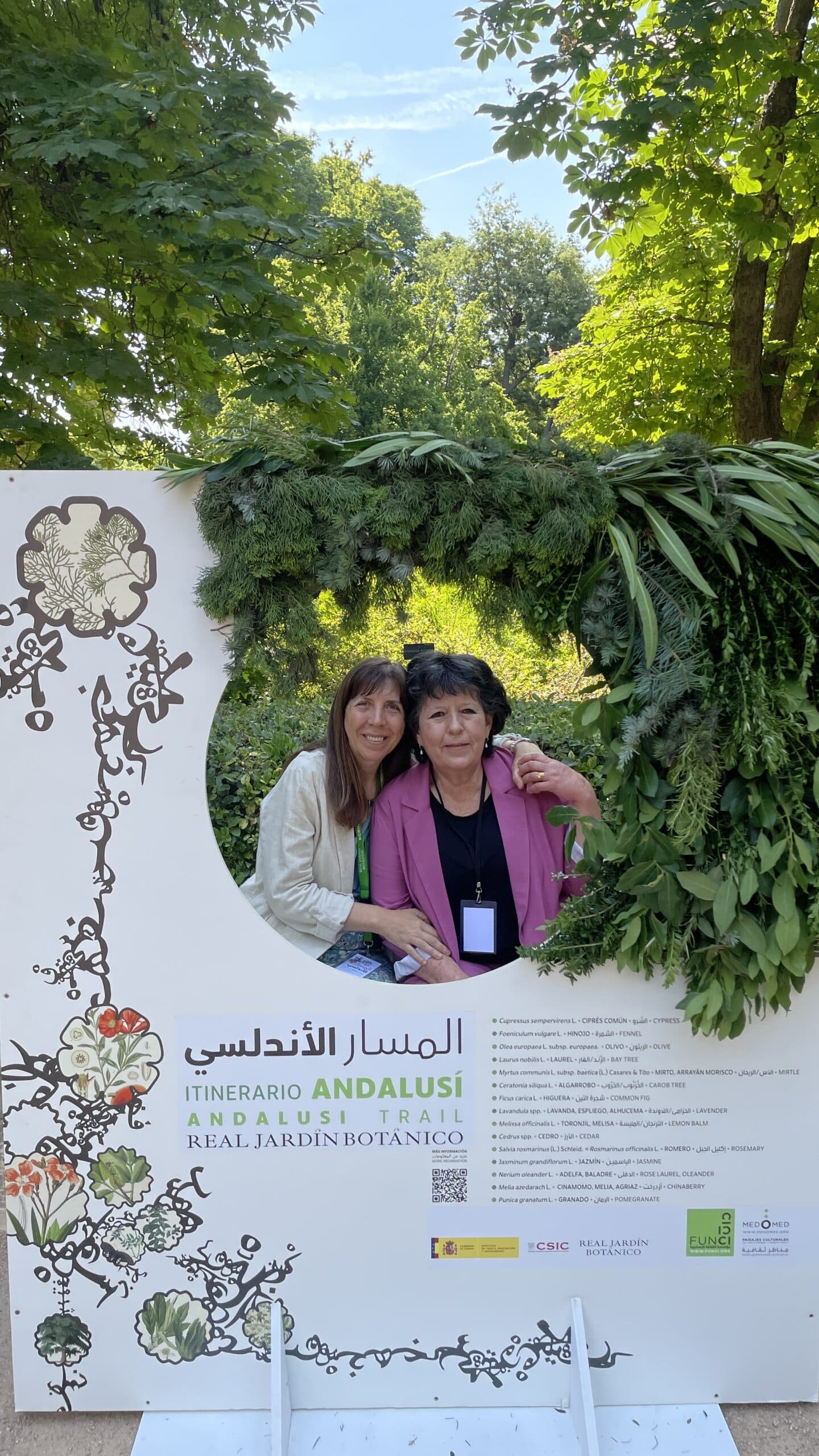
This post is available in: English Español

